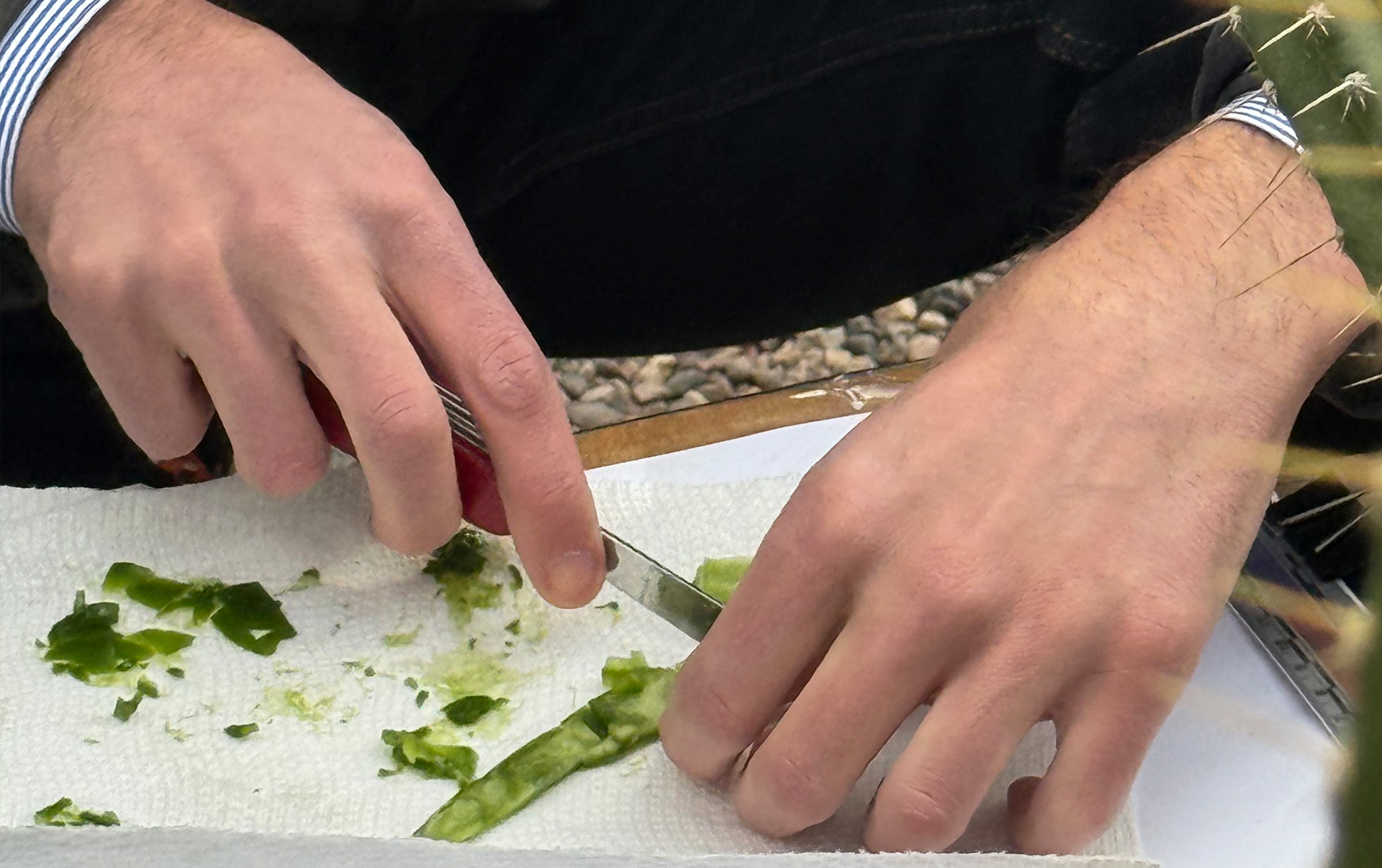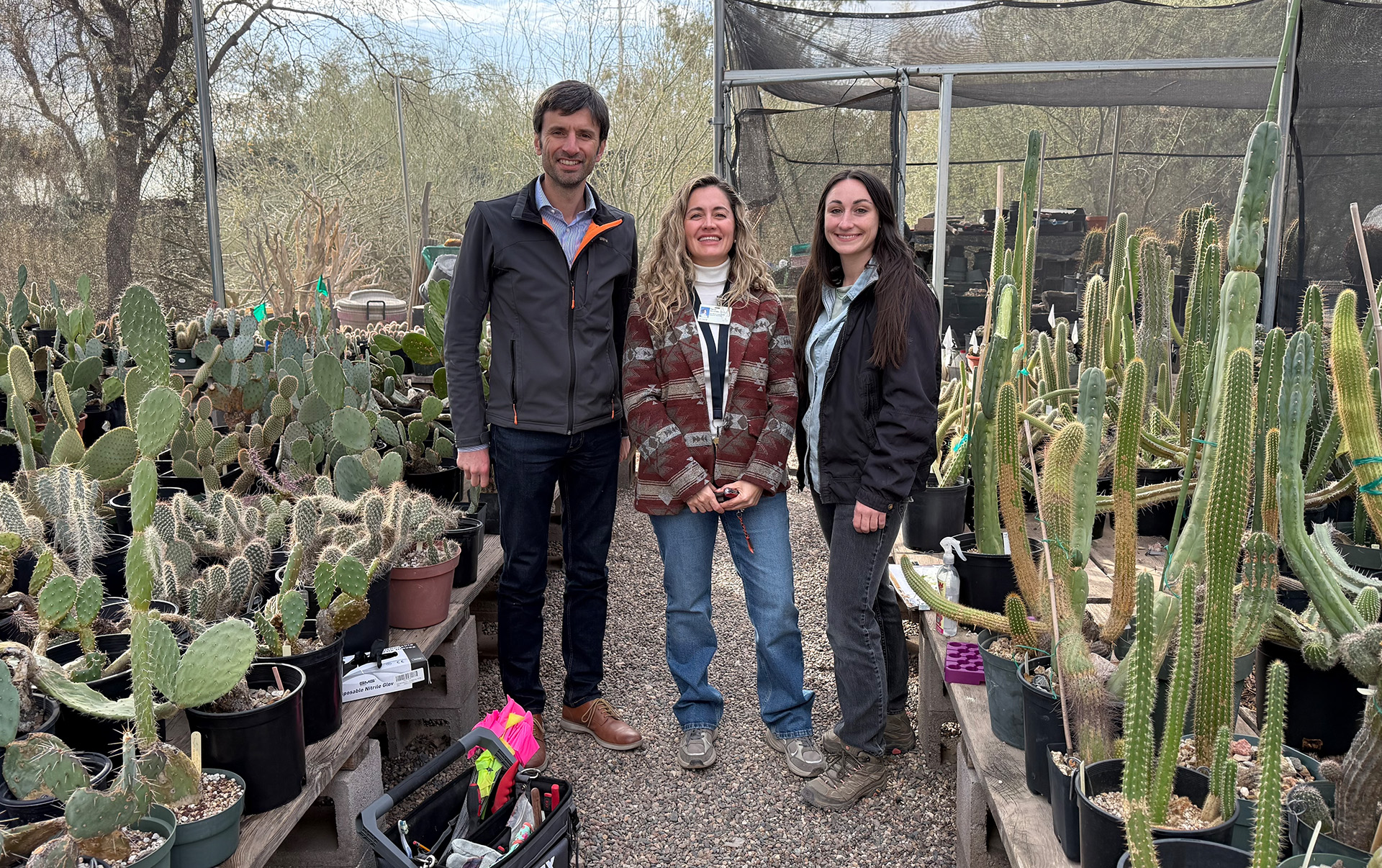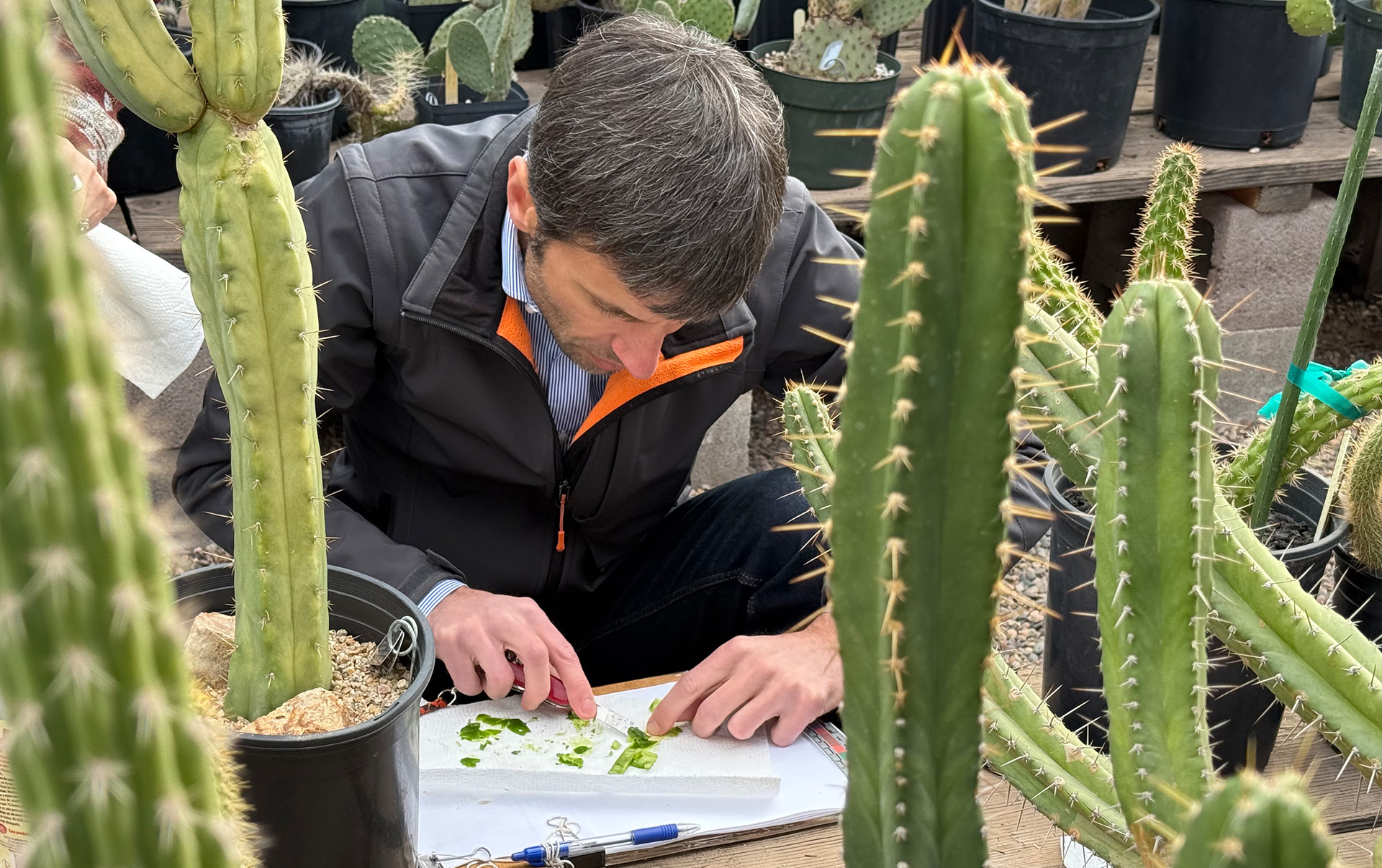On a beautiful Monday morning in January, scientists from Desert Botanical Garden and the Arizona Genomics Institute (AGI) from the University of Arizona came together to embark on an exciting scientific journey—sampling the iconic giant cardon cactus, located right next to Webster Auditorium.
This beloved plant, admired and photographed by thousands of visitors each year, holds a rich history at the Garden. It was brought from Sonora, its native distribution in northwest Mexico by the first director of the Garden, George Lindsay, in 1939.
Now, nearly a century later, it is at the forefront of groundbreaking genetic research.
If you look closely, you’ll notice that scientists carefully took a sample from the “baby arm” growing on the south side of the plant. “Young tissue gives the best results for DNA extraction,” explains Dr. Tania Hernandez, Garden New World Succulents Cactus Scientist.
“Cactus and agave DNA can be challenging to extract, but thanks to our collaborators at AGI, we are taking a crucial step in this scientific endeavor.”

The collected DNA will be sequenced at AGI’s state-of-the-art facilities in Tucson, resulting in the first-ever complete genome of the cardon cactus. This valuable genomic data will serve as a foundation for future studies, helping scientists unlock new insights into the biology and evolution of this and other columnar cactus found throughout the region.
These towering cactus have been a defining feature of the Garden. “I would love to tell Dr. Lindsay or Ms. Webster that the very plant they introduced so long ago is now part of cutting-edge genomic research that will help us advance science,” says Dr. Hernandez.
This exciting project is part of the Genomics for the Conservation of Cactus and Agave program, an initiative in which Garden scientists collaborate with national and international partners to sequence the genomes of several species.
As part of this effort, AGI will also sequence the complete genomes of the endangered Echinocereus arizonicus var. arizonicus and the San Pedro cactus (Trichocereus pachanoi) in collaboration with colleagues from Brazil.
Stay tuned as we continue to explore the fascinating world of cactus and agaves, using genomics to deepen our understanding and conservation efforts for these remarkable desert plants.

